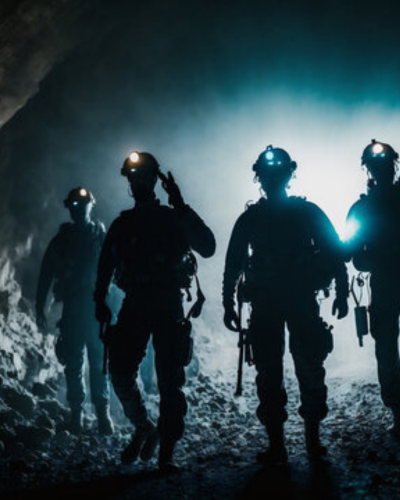

Date: February 17, 2025

Discover how GIS (Geographic Information System) and Remote Sensing are revolutionizing mining exploration. Learn how DVS Mining is leading the way in utilizing these technologies to optimize mining operations and enhance efficiency.
What is GIS? GIS involves capturing, storing, checking, and displaying data related to positions on Earth’s surface. In the context of mining exploration, GIS enables mining professionals to analyze geological features and potential sites based on various environmental, topographic, and geological factors.
What is Remote Sensing? Remote sensing involves collecting data from satellites, drones, or aircraft without direct contact. These sensors detect a variety of parameters such as mineral composition, vegetation cover, and soil properties, providing an extensive dataset for analyzing potential mining locations.
Enhanced Site Selection The combination of GIS and Remote Sensing allows geologists and mining companies to analyze vast geographical areas with precision, identifying locations that may hold valuable resources. By collecting data on landforms, mineral deposits, and environmental conditions, mining experts can determine the most suitable spots for exploration.
Cost Efficiency and Time Savings Traditionally, mining exploration involved extensive fieldwork, which could be time-consuming and expensive. GIS and Remote Sensing drastically reduce the need for physical exploration by providing accurate data about large areas, thereby saving both time and money. Companies like DVS Mining leverage these technologies to fast-track their exploration efforts.
Real-time Data Analysis Remote sensing provides near real-time data, enabling mining companies to make quicker decisions. GIS software allows for the integration of various datasets, such as satellite imagery, geological maps, and environmental data, to create a comprehensive view of potential mining areas.
Sustainability and Environmental Impact Mining companies are under increasing pressure to minimize their environmental footprint. GIS and Remote Sensing allow for better monitoring of environmental factors such as water flow, soil stability, and vegetation, ensuring that mining activities are sustainable and compliant with environmental regulations.
DVS Mining has been at the forefront of adopting GIS and Remote Sensing technologies to streamline their mining exploration processes. By integrating advanced data analytics with cutting-edge satellite imagery, DVS Mining not only accelerates the exploration phase but also ensures that every decision is backed by accurate, reliable data. Their approach allows them to identify high-value mining opportunities and mitigate risks effectively.
The adoption of GIS and Remote Sensing technologies by DVS Mining represents a forward-thinking approach that maximizes operational efficiency and aligns with global sustainability trends, making them a trusted partner in the mining industry.
"A relevant quote to add value and context to the blog post."
Summarize the blog post here and provide a closing statement. Encourage readers to engage with comments or contact the company for more information.
Whether you're looking for more information or ready to start a project with us, we're here to help. Get in touch with us today!